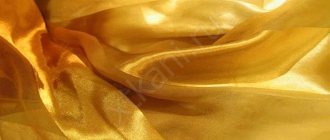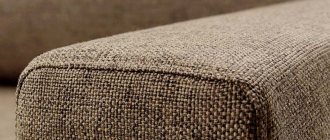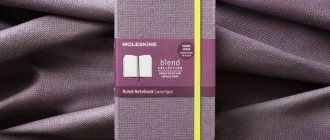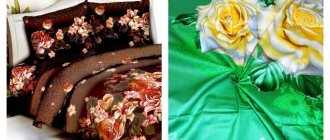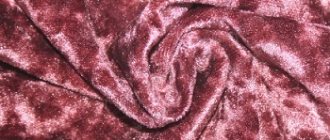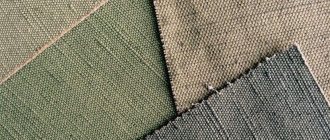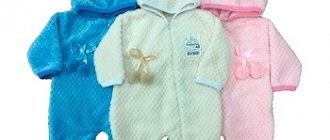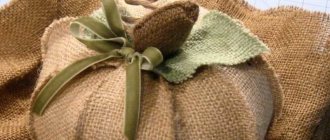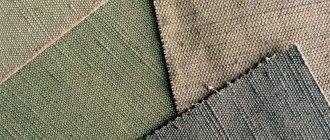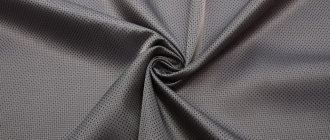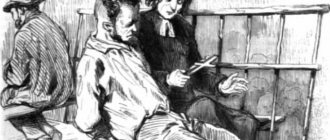Home / Natural fabrics
Back
Published: 12/15/2020
Reading time: 4 min
0
952
Jute has been known to mankind since time immemorial: it was used to weave rough clothing, ropes, and was even used for food. The first attempts to make fabric were made in the 19th century in Scotland. But true production became possible only with the advent of modern technologies and more powerful machines capable of handling tough fiber. Today, jute is a fabric in demand in many industries, agriculture, the fashion industry and handicrafts.
- 1 Origin of fibers
- 2 Fabric making
- 3 Properties: pros and cons
- 4 Applications
- 5 Other types of jute materials 5.1 Seals
- 5.2 Rough cloth
- 5.3 Twine and ropes
Origin of fibers
The raw material for the production of jute fabric is an annual plant of the same name from the Malvaceae family - a shrub or subshrub. Other names are Utah, Calcutta hemp. Although there are over 80 plant species in the world, two species are mainly used for raw materials: Corchorus olitorius, Corchorus capsularis.
Grows in the subtropics and tropics of Asia, America, Asia, Australia. The main production of jute fiber occurs in India and Bangladesh, where it is sometimes the only source of income for many small farms. The crop is also grown in China and Myanmar. Production in post-Soviet territory is concentrated in Uzbekistan.
Interesting! Modern breeders have developed new varieties of jute that are not afraid of pests. Thanks to this, the volumes and quality of final raw materials have increased.
The formation of a plant from planting to harvesting takes 4-5 months. The height of the shrub depends on its habitat and local climatic conditions. Under favorable circumstances it can reach more than 3 m.
Jute fiber is valued for the presence of components in its structure:
- Lignin is a substance that is a complex of aromatic polymers with similar structures that are part of the woody walls of plant cells. It is a key component of wood fibers. Compressive strength comparable to concrete;
- Cellulose is an organic substance, the main component of cell membranes. Insoluble in water, contains glycosides.
Thanks to such components, jute exhibits the properties of wood and textiles.
Interesting! As lignin decomposes, it releases the smell of vanilla, giving a specific aroma to old books.
How to choose the right jute fabric
Before choosing a fabric, you need to decide what the material is for. It is worth paying attention to what the jute is made of and from what raw materials. Different types of plants are used to make decorative threads, woven fabric, and upholstery fabric.
Natural material from low grades is quite coarse. Over-dried in the sun or dried several times becomes brittle. If the jute is wet, there is a high probability that putrefactive bacteria have grown in it.
You may be interested in: What fabrics are used to create children's bedding
Blended fabrics are popular in the textile industry. The addition of cotton fiber makes the fabric softer, and with flax it becomes stronger and more elastic.
The addition of special impregnations and lamination reduce the hygroscopicity of the material and protect it from fading in the sun. Jute becomes resistant to moisture. Impregnated Calcutta hemp upholstery is suitable for garden upholstered furniture on a covered terrace. Used as an upholstered part of rattan furniture.
Laminated fabric
Fabric making
The textile production process consists of several cycles: from the direct cultivation of the crop to the final stage - obtaining the finished fabric.
Making jute material begins with collecting plants. The formed stems are cut, tied in armfuls, and kept in the field for about three days so that the leaves wither and fall off.
Then the sheaves are immersed in ponds or other bodies of water and left for 10-15 days. During this time, moisture erodes the adhesive layer, destroys the connecting plates, making it easier to separate the fibers. After this time, they begin to clean the raw materials without removing them from the water.
Jute threads are thoroughly washed and hung to dry on crossbars or other supports. The finished raw materials are sent to processing plants, and then to weaving factories, where they are made into jute fabric.
Most popular
Jute is a long natural fiber produced from plants of the Corchorus genus and consists of plant fiber and lignin. The fiber has many uses, including the production of biodegradable packaging material such as antler bags. Jute is recognized as the second most important plant fiber in the world, second only to cotton, in terms of global consumption and production. India and Bangladesh produce the largest quantities of jute in the world, with global production estimated at more than 3.3 million tons per year.
Properties: pros and cons
The natural material is created mainly by the linen method of weaving threads. The essence of the weaving technique is to overlap one weft thread with one warp thread. The density of fabric made from jute depends on the thickness of the threads and the frequency of weaving. Varies from 190 to 420 g/m2.
Author:
Anastasia Kukushkina
I hope you enjoy the article I have prepared for you! If you find errors in it, write to me about it! I will answer any questions you have, ask them!
